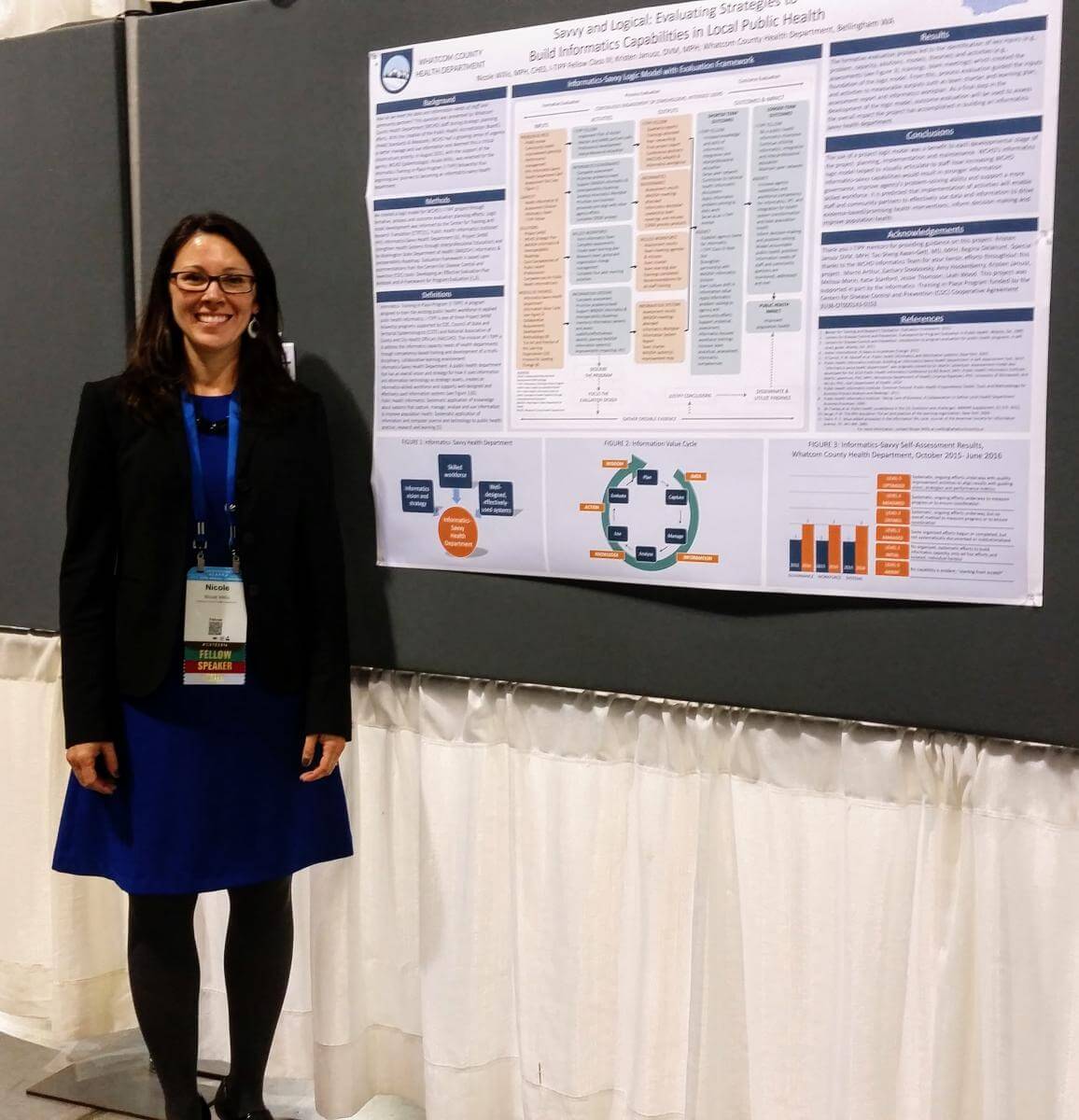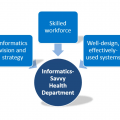Background
Recently, in Washington State, the State Health Officer kicked off an initiative to understand the current state of our information systems, and begin the development of a “Long-term Vision for Surveillance Data.” The initiative aligns directly with the Washington State Informatics Roadmap, which was developed in the fall of 2015. It aims to decrease “siloed” systems within the agency, and to spark innovative data use as well as means for sharing technology services across the agency.
Building our informatics roadmap
The Whatcom County Health Department’s (WCHD) informatics work started before our introduction to Project SHINE. Throughout 2014, the agency was experiencing a sense of urgency around data and information management. Accreditation preparation, strategic planning, community health improvement efforts and performance management system development had left staff with a higher level of commitment to become data-driven, but the question remained, “How can we create an agency-wide culture where information is valued, decisions are driven by data and the information needs of staff and community partners are met?”
As assigned, Nicole began researching for answers and came across the Informatics-Savvy Health Department framework and supporting articles. These resources articulated our urgent situation better than we did, had a clear set of vocabulary and introduced informatics in a practical way.
At this point, Nicole applied to Project SHINE’s Informatics-Training In-Place Fellowship (I-TIPP), seeing it as a way to empower our growth in the area of informatics. Having identified the informatics-savvy framework would best fit our wide-spectrum of need, Nicole outlined her application with a plan on how her agency could become data driven through informatics. In July 2015, the health department found out that the application had been accepted, and Nicole joined the Class III of I-TIPP.

During orientation, Nicole was delighted to meet three new SHINE fellows who would be hosted at Washington State Department of Health—including Kim Peifer. We realized our fellowship projects focused on informatics-savvy capabilities and that we both intended to use PHII’s self-assessment tool for building an informatics-savvy health department in our work.
Though our results varied, the usefulness of the tool in identifying existing capacity allowed us to further identify local and state alignment opportunities. Whatcom County chose to focus on skilled workforce and informatics governance, while WADOH would focus on all three domains. Through the “individual heroics” of staff, WCHD was able to accomplish the following project deliverables in nine short months:
- Formed a cross-divisional WCHD Informatics Team.
- Improved analytical and assessment competencies among team members through a competency-based learning plan.
- Developed project management tools (team charter, logic model, etc.).
- Contributed to an agency culture shift where information is valued and commitment to become data-driven is defined.
- Strengthened local and state public health department relations by aligning informatics capacity building efforts.
- Increased WCHD informatics capabilities from a Level 1 to Level 2.
Planning for next year is underway and we will be expanding our informatics-savvy efforts to all three domains. This last year has shown us that local public health departments rarely find themselves in a steady state; most of the time they are in a state of reactive chaos. Informatics provides us with a systematic approach to prepare and recover from the chaos. We look forward to growing what we have started and continue to nurture our partnership with the state health department.
Kim & Nicole Take-Aways
- Agencies that view information as a strategic asset is a factor for success.
- Use the assessment to help you determine your first or next steps– you probably won’t start at a 3; however, you will identify your agency’s informatics capacity and opportunities for improvement.
- The assessment and scores are valuable, but the conversation is really where the value lies.
- It takes people and commitment from all levels of the agency to do this work.
- A skilled workforce is vital. A project cannot move faster than the collective knowledge of the staff participating.
- Strengthening local and state public health partnership gives credibility to local level efforts.
- This process facilitates conversation. One of the common advantages for us was making “informatics” more accessible throughout the agency.
Goals for the Washington state initiative
- Enable and support the development of well-designed, maintained and effectively used information systems.
- Improve efficiency of intra-/inter-partner data exchange and effective use of data.
- Analyze and disseminate data and information in a timely, ethical, open and transparent way.
- Create an Information Governance framework that addresses multidisciplinary information management.
- Develop informatics trained and/or experienced leadership and workforce.
View PHII’s Informatics-savvy Health Department Toolkit.
Listen to episode 10 of “Inform Me, Informatics” on Whatcom County’s Journey Toward Becoming an Informatics-savvy Health Department.


